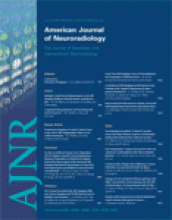Barry B. Goldberg and John P. McGahan, eds. Philadelphia: Mosby-Elsevier, 2006, 512 pages, 400 illustrations, $110.00.
The Atlas of Ultrasound Measurements, 2nd Edition offers insight into established diagnostic criteria detailed by leaders in the field of diagnostic sonography. It serves as a reference for those establishing a practice, a comprehensive text for study protocol preparation, an essential reference book for those seeking and/or renewing accreditation of their laboratories, as well as a standard text for physicians in training and sonographers.
The editors organized this book into anatomic/specialty segments comprising 13 areas, which allow a quick reference of an area of interest. There are a total of 93 chapters blending gray-scale, Doppler, and newer 3D/4D applications in obstetric and genitourinary sonography. The contributors include experts in their fields of medical sonography, as well as newcomers initiating their professional careers in this exciting imaging field.
The book offers a detailed obstetric slate of measurements, divided into 3 parts: first trimester, second and third trimesters, and obstetric Doppler, including placental circulation. These parts are then divided into 43 individual chapters with measurements, charts, illustrations, and state-of-the-art 3D/4D images for easy identification of fetal anatomic landmarks. A very complete gray-scale fetal cardiac evaluation is included, supplemented by a description of Doppler fundamental principles for accurate fetal cardiac evaluation. The authors caution the reader regarding higher energy exposure of the fetus during spectral Doppler evaluation, guiding the reader to localize the area of interest first with color Doppler (remaining within the as low as reasonably achievable recommendations). A comprehensive up-to-date reference list with classic publications and recent literature is provided.
Pediatric sonography measurements are detailed in Part 5, subdivided into 18 chapters. These range from neurosonology to abdominal/pelvic and musculoskeletal evaluations. It is rich in detail regarding scanning techniques to avoid exerting too much pressure (on the fontanelle) and selecting the best transducer. Evaluation of pyloric stenosis is comprehensive. The evaluation of the neonatal hip, endorsed by the American College of Radiology and the American Institute of Ultrasound in Medicine as the best method for the exclusion of developmental hip dysplasia, is complete with angle measurements, femoral head size, and a full description of correct positioning of the patient and anatomic landmarks for accuracy.
An entire part is dedicated to the 3 methods of cardiac evaluation with sonography, encompassing pediatric and adult patients. The author details M-mode, pulsed-Doppler, and 2D echocardiography. All calculations of cardiac and valvular performance are included with current reference articles. Transesophageal echocardiography, due to its specific applications, is not included in this book.
Head and neck imaging comprises gray-scale and Doppler evaluation, described in 2 separate parts. Chapters on internal carotid/vertebral artery surveillance (with endorsement of the consensus conference sponsored by the Society of Radiologists in Sonography) are complete. Transcranial Doppler is approached with detailed descriptions of vessel identification, flow characteristics and direction, interpretation guidelines, as well as its strengths and limitations. A complete set of criteria for diagnosing stenosis, occlusion, collateral pathways, vasospasm, and elevated velocities in sickle cell disease is included. Another chapter in this part, very well-illustrated, includes scanning techniques and criteria for the diagnosis of temporal arteritis.
The well-established applications of abdominal, pelvic, and Doppler are very complete. However, the newer applications of volume acquisition of sonographic images and their clinical applications of 3D/4D for abdominal/pelvic areas have yet to be established; therefore, they are not included in this edition. Volumetric images of the kidneys and urinary bladder are portrayed in 3D format.
Part 10 represents a complete set of chapters on the role of Doppler in the evaluation of native and transplanted organs and specific applications such as transjugular intrahepatic portosystemic shunts, renal artery stenosis, and chronic mesenteric ischemia. Every chapter discusses in detail normal and abnormal hemodynamics portrayed on spectral waveforms, offering clues to the underlying pathology related either to cardiac disease or to the organ being evaluated.
The entire book has state-of-the art illustrations, with excellent color, power, or 3D/4D sonographic images. The authors and editors have compiled a very comprehensive text regarding sonography measurements: gray-scale, color/power, and spectral Doppler. Those interested in neuroradiology can derive basic comprehension of the diagnostic sonography field as it pertains to prenatal intracranial assessment and middle cerebral artery flow and its value in the assessment of fetal growth restriction. Neonatal neurosonology, transcranial Doppler, and extracranial carotid occlusive disease are other applications pertaining to neuroimaging.

- Copyright © American Society of Neuroradiology












